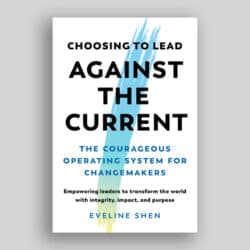Edited by Julia Gorman
Published by The Canadian Centre for Philanthropy, Toronto, Ontario, 1989, pp. 44, Associates $6.95, Others $9.95.
This manual (a collection of four papers presented at a one-day seminar sponsored by The Canadian Centre for Philanthropy in February, 1988) provides much useful information on techniques and strategies for raising money from corporations.
In the first paper, “Preparing for Corporate Solicitation”, Kevin Allen covers assembling a prospect list, information-gathering, evaluating prospects, and selecting and preparing solicitors. The author, a professional fund raiser himself, recommends that if the prospective corporate donor refuses to donate, the solicitor should note the reasons and conclude on a note of optimism, expressing the hope that the corporation may find it possible at some future time to support the fund-raising organization. Too often, fund raisers refuse to accept a potential donor’s choice not to contribute. Such an attitude alienates potential donors.
The second paper, “Procedures and Strategies for Soliciting Major Corporate Gifts” was written by Vincent Saele. The author, an experienced fund raiser, advises on how to prepare for, and conduct, the preliminary meeting or pre-summit, how to prepare and present the proposal, and how to follow up. He also discusses creative marketing techniques and public relations. Mr. Saele’s analysis of the fund-raising process as a negotiation is a useful one. In a negotiation, the parties aim for a resolution which benefits everyone. The fund raiser must convince the donor that the requested gift will assist the charity and that it will benefit the donor. The latter point is especially important as corporations face a particularly difficult task in deciding how to allocate their limited charitable resources.
In his paper, “The Corporate Viewpoint: Guidelines for the Soliciting Organization”, Joseph Cruden outlines the role and responsibilities of the donations officer, describes proposal requirements, discusses typical corporate donations policies and explains the corporate donation decision-making process. The author provides valuable insights into how corporations decide on charitable gifts. For example, some fund raisers may be unaware that many corporations limit the amount that they donate to a particular cause. This limit is often fixed as a percentage of the funds which the charity is seeking from the public for the particular fund-raising project The success of a corporate fund-raising drive is often measured by the extent to which the corporation solicited exceeds this limit
The final paper, written by Keith Elliot, Director of Public Affairs of F.W. Woolworth Company Limited, is entitled “Why Corporations Give: A Case Study of F.W. Woolworth Company Limited”. The donations policy of Woolworth’s emphasizes two areas: first, the local communities in which most of its customers live and work and second, social services which benefit its customer base, i.e., people of modest income. Mr. Elliot points out that the optimal corporation-charity relationship recognizes this kind of tie-in benefit.
Although most of the authors recommend that fund raisers suggest an amount which a prospective donor is expected to give, Mr. Elliot does not condone such an approach. He feels donors are perfectly capable of judging how much they wish to give. Providing a list of costs of particular items, however, may be useful. A recommendation that appears in most of the papers is that fund raisers should use their connections with corporate directors or senior officers to assist in securing donations. Although many fund raisers are able to use this technique, a substantial number of charities do not have access to corporate boardrooms and executive suites so, unfortunately, many deserving charities are locked out of the process.
Another question is whether directors and officers should make philanthropic decisions on behalf of the shareholders. Should the shareholder’s funds be appropriated in this manner? In a successful attempt to deal with this problem, one United States corporation has implemented an elegantly simple solution of shareholder-designated charitable contributions (see “Shareholder-Designated Charitable Contributions”, 9 Philanthrop. No. 2, page 31).
I would recommend this publication both to fund raisers and to corporations themselves. The papers are well written and will be consulted regularly by those who have to raise money from corporations.
Available from: The Canadian Centre for Philanthropy (address p. 1)
REVIEWED BY DAVID E. SPIRO
Blake, Cassels 4 Graydon, Barristers and Solicitors, Toronto


